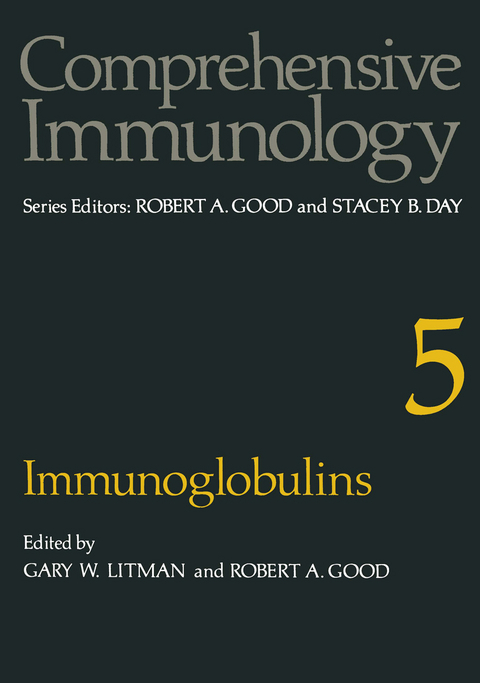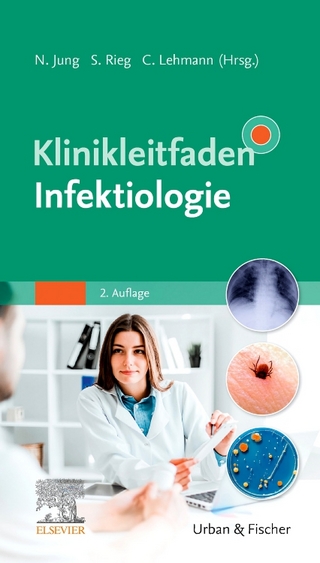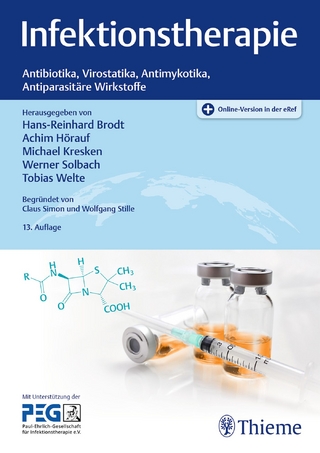
Immunoglobulins
Springer-Verlag New York Inc.
978-1-4684-0807-2 (ISBN)
1 Studies on the Three-Dimensional Structure of Immunoglobulins.- 1. Introduction.- 2. X-Ray Crystallographic Techniques.- 3. Immunoglobulins and Fc Fragments.- 4. Three-Dimensional Structure of Light Chains.- 5. Fab Fragments.- 6. Antibody Combining Sites.- 7. Structure of Fab-Hapten Complexes.- 8. Structure and Genetic Control of VL and VH Regions.- 9. Conclusions.- 10. Note Added in Proof.- References.- 2 Solution Conformation and Segmental Flexibility of Immunoglobulins.- 1. Introduction.- 2. Immunoglobulin G.- 3. Immunoglobulin M.- 4. Immunoglobulin A.- 5. Immunoglobulin D.- 6. Immunoglobulin E.- 7. Concluding Remarks.- References.- 3 The Affinity of Antibody: Range, Variability, and the Role of Multivalence.- 1. Introduction.- 2. Affinity for Monovalent Ligands.- 3. Role of Multivalence.- 4. Structural Analysis of Combining Sites.- 5. Closing Statement.- References.- 4 Antibody Combining Regions.- 1. Background.- 2. Structural Properties of Antibody Combining Regions.- 3. Structural and Functional Correlates of Antigen-Binding.- 4. Biological Significance of Antigen-Binding.- 5. Summary.- References.- 5 The Secretory Component and the J Chain.- 1. Introduction.- 2. The Secretory Component.- 3. The J Chain.- References.- 6 The Structural Basis for the Biological Properties of Immunoglobulins.- 1. Introduction.- 2. Nature of Immunoglobulin Biological Properties.- 3. Submolecular Localization of Immunoglobulin Biological Properties.- 4. Summary and Conclusions.- References.- 7 The Significance of Gene Duplication in Immunoglobulin Evolution (Epimethean Natural Selection and Promethean Evolution).- 1. Introduction.- 2. Epimethean Nature of Evolution by Natural Selection.- 3. Why the Promethean Evolution of the Immune System?.- 4. Strategy of Promethean Evolution.- 5.Conclusions.- References.- 8 The Phylogenetic Origins of Immunoglobulin Structure.- 1. Introduction.- 2. Invertebrate Humoral Immunity—Agglutinins.- 3. Immunoglobulins of Ostracoderm-Derived Vertebrates.- 4. Immunoglobulins of Placoderm-Derived Vertebrates.- 5. Conformation and Active Sites.- 6. Proteolytic Cleavage Products of Immunoglobulins from Lower Species.- 7. Primary Structure.- 8. Cell-Surface Immunoglobulin and Immunoglobulin-Related Structure(s).- 9. Summary and Conclusions.- References.- 9 Evidence for and the Significance of ‘Two Genes, One Polypeptide Chain’.- 1. Basic Immunoglobulin Units.- 2. History.- 3. Allotypes of Rabbit Heavy-Chain Variable Regions.- 4. Sharing of a Single Constant Region by Variable Regions.- 5. Sharing of a Single Variable Region by Constant Regions.- 6. Reciprocal Sharing of Variable and Constant Regions in Heavy Chains.- 7. DNA-RNA Hybridization.- 8. Fusion of the Variable and Constant Regions.- 9. Three Linkage Groups.- 10. More Than Two Genes for One Polypeptide Chain?.- 11. Specific Gene Activation and Differential Gene Expression.- 12. Genetic Switch.- 13. Summary.- References.- 10 Structure of Atypical Immunoglobulins—Relationship to Genetic Control Mechanisms.- 1. Introduction.- 2. Heavy-Chain Variants: Heavy-Chain-Disease Proteins.- 3. Myelomas with Altered Heavy Chains.- 4. Myelomas with Altered Light Chains.- 5. Hybrid Molecules.- 6. Nonsecretors.- 7. Discussion.- References.- 11 Patterns of Sequence Variability in Immunoglobulin Variable Regions: Functional, Evolutionary, and Genetic Implications.- 1. Introduction.- 2. Variable Regions Defined: Molecular Limits and Phylogenetic Occurrence.- 3. Variable Region-Constant Region Transition.- 4. Subgroups Defined and Their Distribution in Phylogeny.- 5.Phylogenetically Associated Residues.- 6. Nature of Idiotypy and Its Relationship to Hypervariable Regions and the Antibody Combining Site.- 7. Genetic Origin of Variable-Region Sequence Diversity.- 8. Conclusions.- References.- 12 Genetic Control of Immunoglobulin Synthesis in Man.- 1. Introduction.- 2. Evidence for Genetic Control of Antibody Synthesis in Experimental Animals.- 3. Evidence for Genetic Control of Immunoglobulin Synthesis in Man.- References.- 13 Heavy-Chain Variable (VH) Subgroups among Myeloma Proteins, Antibodies, and Membrane Immunoglobulins of Lymphocytes.- 1. Introduction.- 2. Anti-VH-Subgroup Antisera.- 3. Comparison of VH Subgroups of the Same Proteins Determined Serologically and by Amino Acid Sequence Analysis.- 4. Serologically Determined VH Subgroups in Myeloma Proteins with Previously Unknown VH Subgroups.- 5. Relative Amounts of the VH Subgroups in Different Human Sera.- 6. Restriction of Immune and Natural Human Antibodies for VH Subgroups.- 7. VH Subgroups of Membrane Immunoglobulin of Normal Human Lymphocytes.- 8. VH Subgroups of Membrane Immunoglobulin of Chronic Lymphocytic Leukemia Cells.- 9. Comments.- References.- 14 Cryoglobulins and Pyroglobulins.- 1. Cryoglobulins.- 2. Pyroglobulins.- References.- 15 Biosynthesis and Secretion of Immunoglobulins.- 1. Introduction.- 2. Methods.- 3. Synthesis of Light and Heavy Polypeptide Chains.- 4. Assembly of Immunoglobulin Molecules.- 5. Secretion of Immunoglobulins.- 6. Differentiation of B Lymphocytes.- References.- 16 Lymphocyte Membrane Immunoglobulins: An Overview.- 1. Introduction.- 2. Basic Data on Membrane Immunoglobulins.- 3. Cells That Carry Actively Synthesized Membrane Immunoglobulins.- 4. Membrane Immunoglobulin Idiotypes, Allotypes, and Isotypes.- 5. Effects of the Interactionbetween Membrane Immunoglobulins and Antiimmunoglobulin Antibodies.- References.
| Reihe/Serie | Comprehensive Immunology ; 5 |
|---|---|
| Zusatzinfo | XVIII, 382 p. |
| Verlagsort | New York, NY |
| Sprache | englisch |
| Maße | 178 x 254 mm |
| Themenwelt | Sachbuch/Ratgeber ► Natur / Technik ► Naturführer |
| Studium ► Querschnittsbereiche ► Infektiologie / Immunologie | |
| ISBN-10 | 1-4684-0807-0 / 1468408070 |
| ISBN-13 | 978-1-4684-0807-2 / 9781468408072 |
| Zustand | Neuware |
| Haben Sie eine Frage zum Produkt? |
aus dem Bereich


